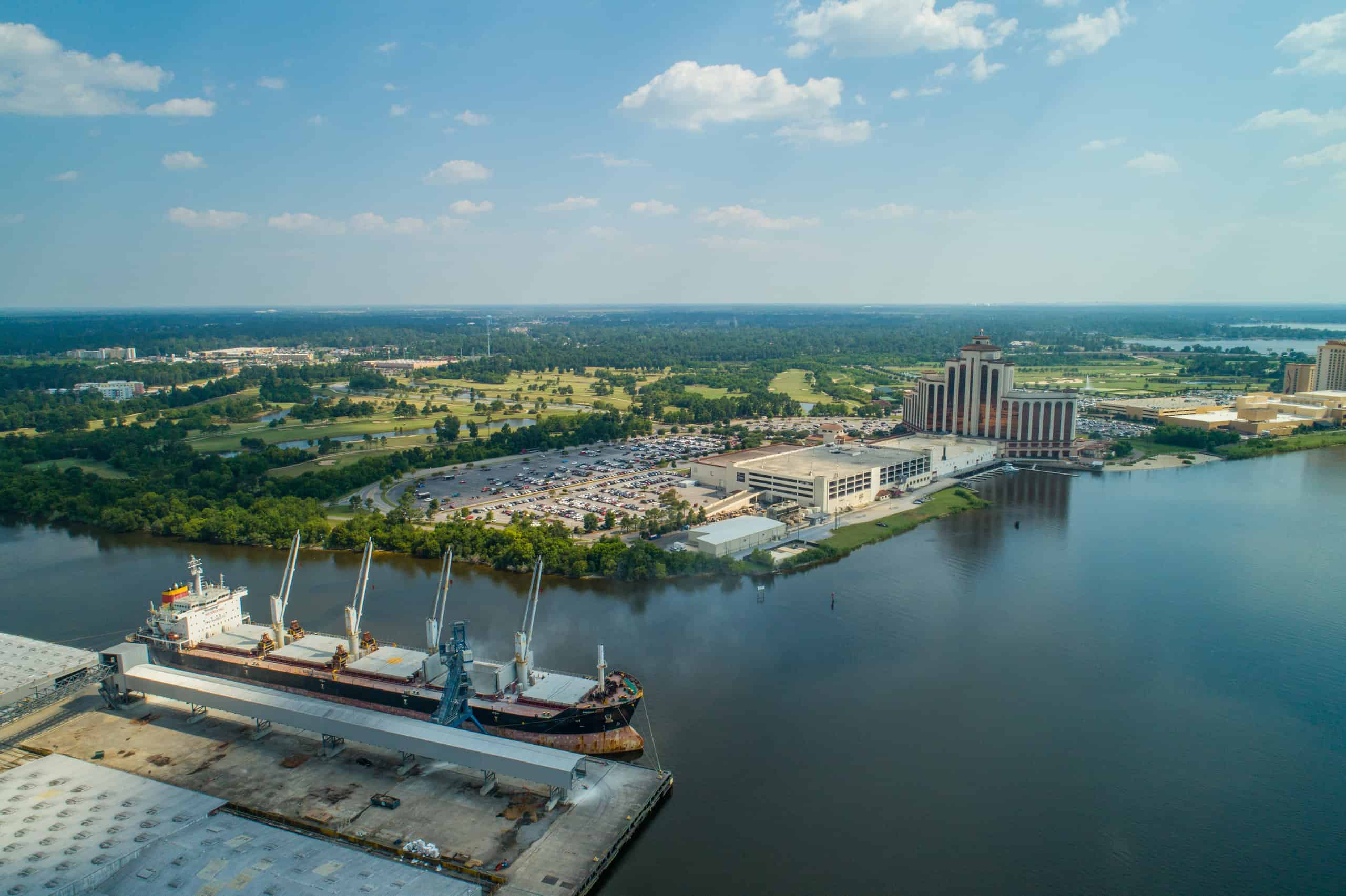
Lake Charles Louisiana
©Felix Mizioznikov/Shutterstock.com
Lake Charles is a coastal city in Louisiana known for its lakes and waterways from which it coined its name the ‘Lake Area’. The city is located on Prien Lake and Lake Charles, which are on the 200-mile (321.87 kilometers) Calcasieu River. Lake Charles is a hotspot for fishing, water sports, boating, and many other water activities. It is also a popular tourist location especially because of the popular Golden Nugget Lake Charles Hotel and Casino which offers a view of the gorgeous lake. Let’s find out how deep Lake Charles is.
How Deep Is Lake Charles?
There are three large lakes in the city of Lake Charles: Prien Lake, Calcasieu Lake, and Lake Charles, the city’s namesake. These Louisiana large lakes are brackish, meaning that water in these lakes has less salinity than seawater but more than freshwater. The salinity is caused by the mixture of the Gulf of Mexico and freshwater along the city shores.
Lake Charles, the innermost lake of the three, has an average depth of 5 feet (1.52 meters). It is located on the Calcasieu River. North Beach is considered one of the most beautiful white sand beaches in the United States and is located along the lake. The bottom of Lake Charles is dredged to keep it deep, thus allowing heavy vessels onto its shores.

Where is Lake Charles Located on a Map?
Lake Charles is a city located in southwestern Louisiana, United States. It is situated on the banks of Lake Charles, which is a freshwater lake and an important recreational site for locals and tourists alike. The city lies approximately 135 miles east of Houston, Texas, and 210 miles west of New Orleans, Louisiana.
To reach Lake Charles by car, one can take Interstate 10 and exit at various points depending on their origin. For those coming from Houston or Beaumont areas in Texas, they can take Exit 34B to merge onto LA-397 S/Nelson Rd towards Lake Charles. Meanwhile, travelers coming from the Lafayette area in Louisiana can take Exit 36A towards Nelson Road.
Lake Charles Regional Airport serves the region with direct flights to Dallas/Fort Worth International Airport (DFW) via American Airlines and William P Hobby Airport (HOU) via Southwest Airlines.
On the map, Lake Charles appears as a small dot surrounded by greenery that represents its proximity to natural parks, such as Sam Houston Jones State Park to the northwest or Sabine National Wildlife Refuge further southeast along Gulf Coast scenery.
The Deepest Lakes In Louisiana
There are several shipping channels in Louisiana. Though dredging is commonly used to keep the lakes deep, many lakes are naturally deep. Eight of the deepest lakes in Louisiana are Lake Peigneur, Calcasieu Lake, Lake Maurepas, Lake Pontchartrain, Lake Borgne, Caddo Lake, Toledo Bend Reservoir, and Lake Claiborne.
Lake Peigneur
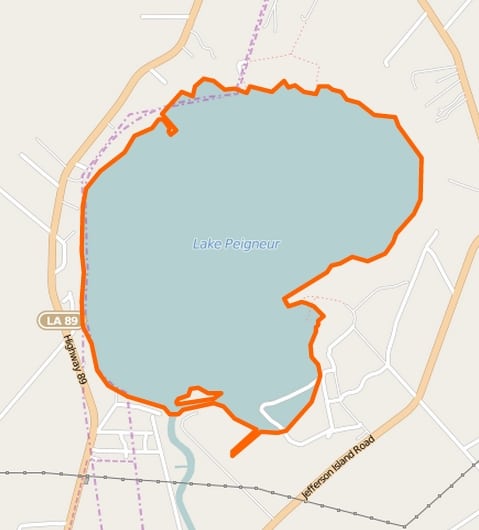
Map of Lake Peigneur, Louisiana
©© OpenStreetMap contributors”, CC BY 2.5 <https://creativecommons.org/licenses/by/2.5>, via Wikimedia Commons – License
Lake Peigneur is considered the deepest lake in the state of Louisiana. The 1,125 acres (1810.51 square kilometers) brackish lake is located north of Delcambre and has New Iberia in its east. Lake Peigneur has an average depth of 3 feet (0.91 meters) and a maximum of 200 feet (60.96 meters), making it one of the deepest lakes in Louisiana.
Calcasieu Lake

Calcasieu Lake has an average depth of 3.3 feet.
©Judy M Darby/Shutterstock.com
Calcasieu Lake, also known as Big Lake, is a 49,149-acre (198.90 square kilometers) lake located in Cameron Parish, about 17 miles from Lake Charles. The lake’s brackish nature is due to the fact that it opens to the Gulf of Mexico. Calcasieu Lake has an average depth of 3.3 feet (1.01 meters). Fish like trout, catfish, and cobia are commonly found in the lake.
Lake Maurepas

Lake Maurepas is the second largest lake located entirely in Louisiana known for its laid-back, undeveloped atmosphere and environment.
©iStock.com/undefined undefined
Lake Maurepas is a freshwater lake that spans a surface area of about 59,000 acres (238.76 square kilometers) and is located in southeastern Louisiana. The lake is the second largest lake in Louisiana and is connected to Lake Pontchartrain, the largest, via Pass Manchac. The circular lake has a mean depth of about 10 feet (3.05 meters).
Lake Pontchartrain
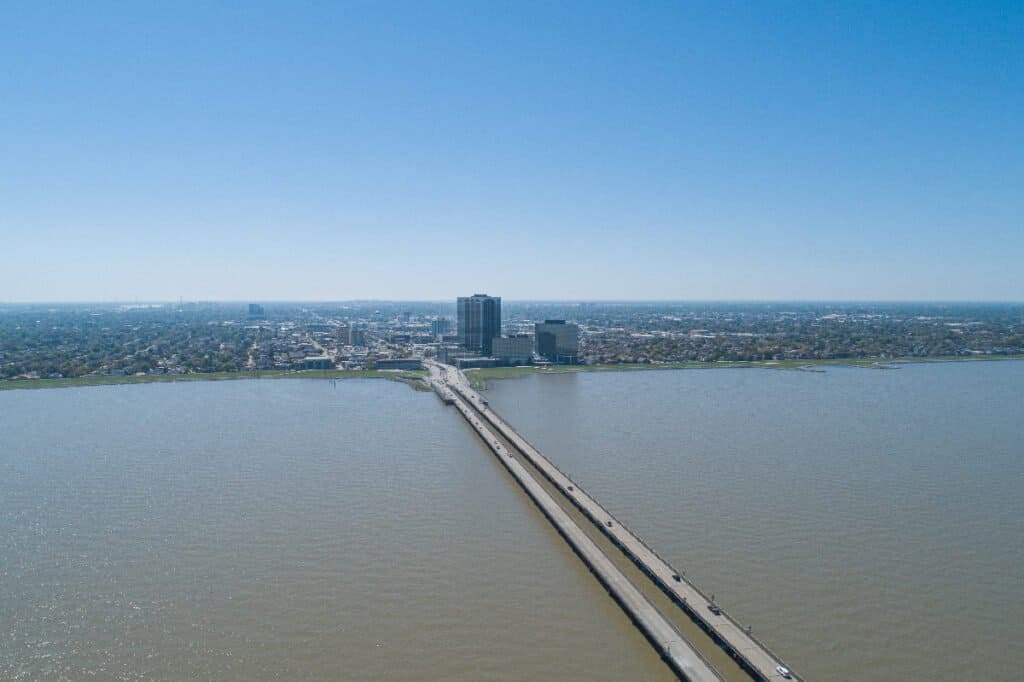
Lake Pontchartrain has an average depth of 12 to 14 feet.
©Mark Runde/Shutterstock.com
Lake Pontchartrain ranks among the thirty largest lakes in North America and is the largest lake in Louisiana. The lake spans about 402,800 acres (1,630.07 square kilometers) and is connected to the Gulf of Mexico via the Chef Menteur Pass and the Rigolet Strait. The roughly oval-shaped lake has an average depth of 12 to 14 feet (3.66-4.27 meters).
Lake Borgne
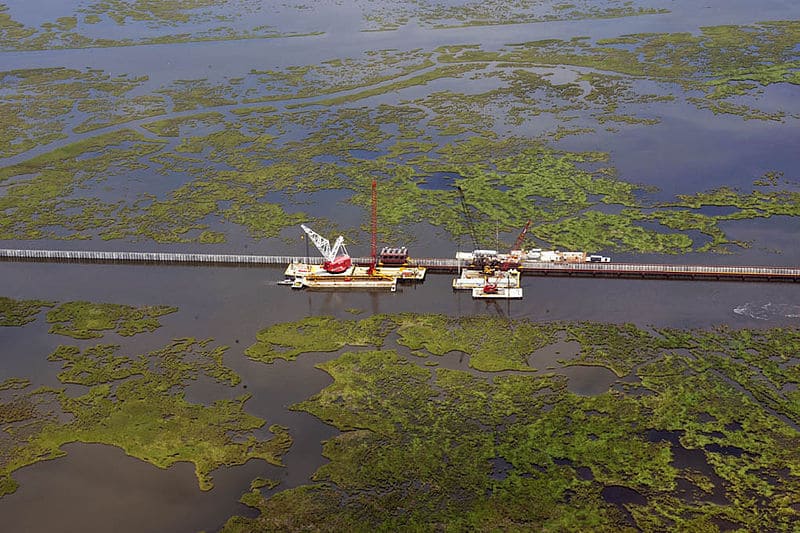
Lake Borgne has an average depth of 9.8 feet, and a maximum depth of about 328 feet, according to some reports.
©eutrophication&hypoxia / flickr – License
Some maps consider Lake Borgne a lagoon in recent times. The lake, which spans 180,387 acres (730.00 square kilometers), was originally surrounded by land before coastal erosion made it a part of the Gulf of Mexico. The lake has an average depth of 9.8 feet (2.99 meters). There have been reports of Lake Borgne reaching a maximum depth of about 328 feet (100 meters).
Caddo Lake
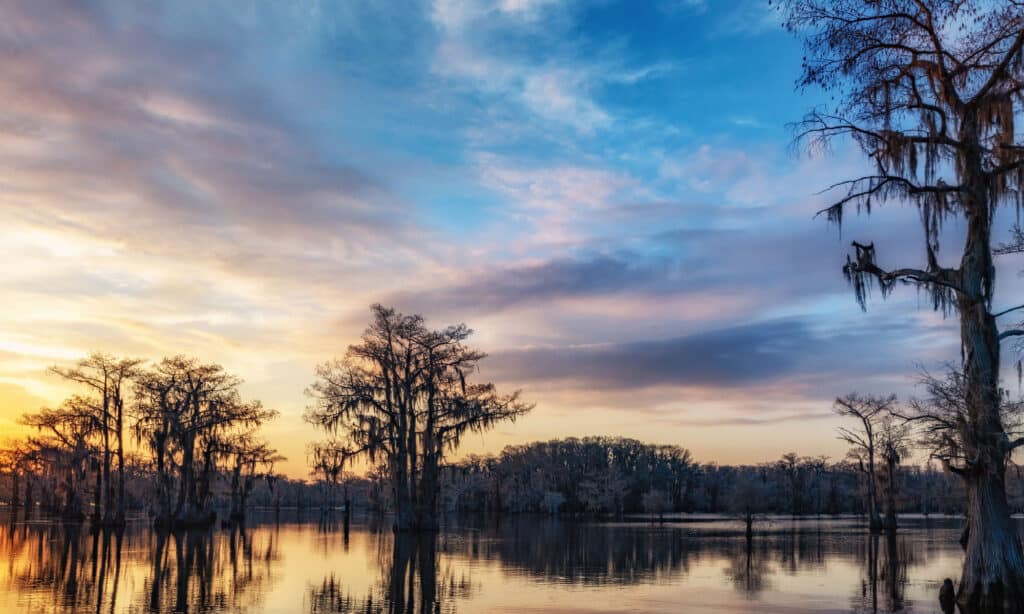
Caddo Lake has an average depth of 8 to 10 feet and a maximum depth of 20 feet.
©iStock.com/westtexasfish
According to Texas Parks and Wildlife, Caddo Lake has an average depth of 8 to 10 feet (2.44-3.05 meters). The 25,400-acre (102.79 square-kilometer) lake has a maximum depth of about 20 feet (6.10 meters).
Toledo Bend Reservoir
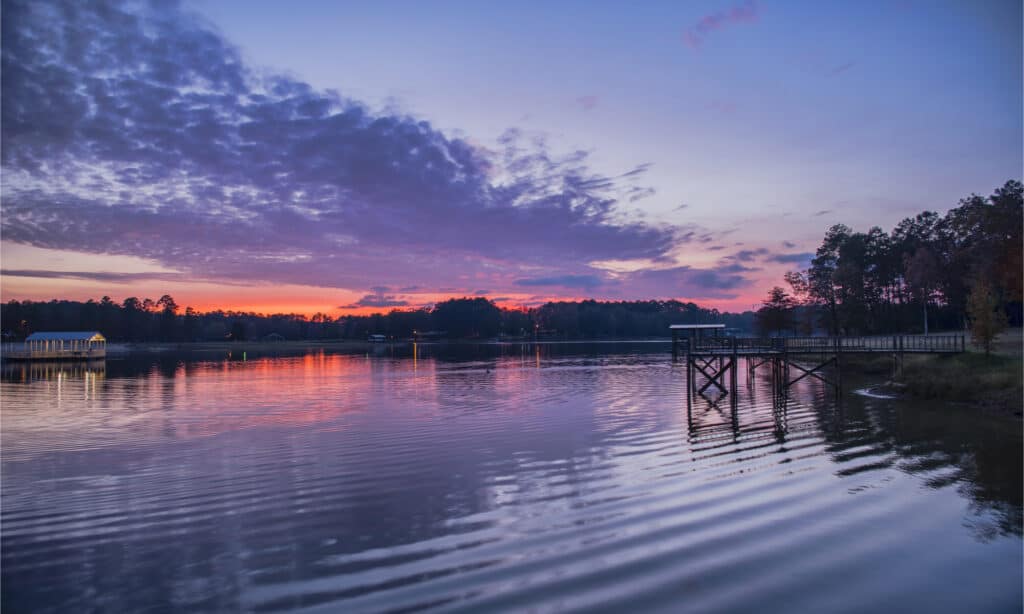
Toledo Bend Reservoir is located along the western border of Louisiana and is known to be home to huge sunfish!
©Bonnie Taylor Barry/Shutterstock.com
The Toledo Bend Reservoir lies between Texas and Louisiana and has a surface area of more than 185,000 acres (748.7 square kilometers). This size makes the deep lake one of America’s largest man-made lakes. The lake is believed to contain a total of 4,472,900 acre-feet (5.52 cubic kilometers) of water and has an average depth of 24 feet (7.32 meters). The maximum depth in the Toledo Bend Reservoir is 110 feet (33.53 meters).
Lake Claiborne
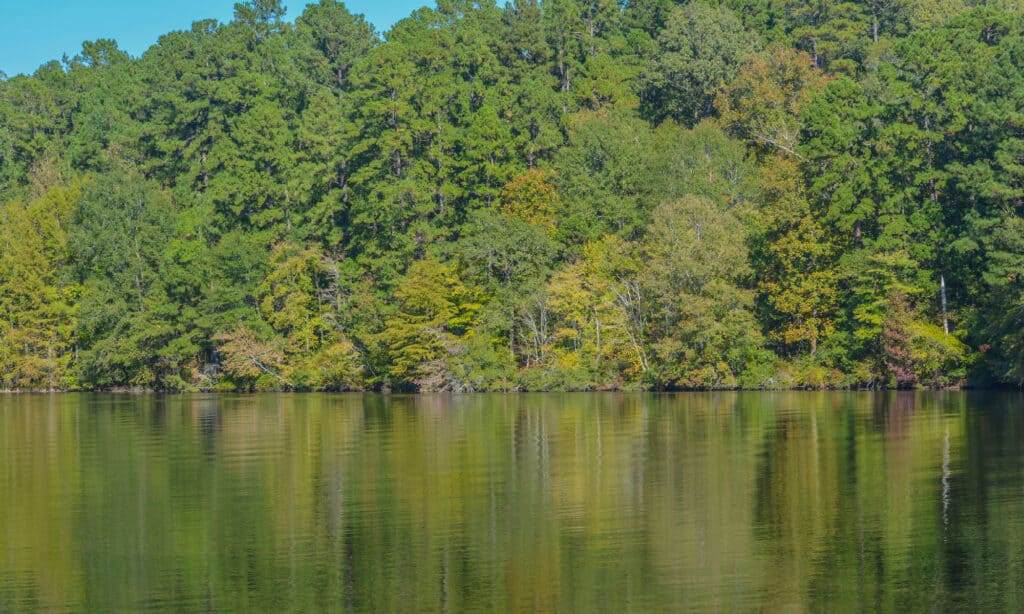
Lake Claiborne has an average depth of 15.7 feet and a maximum depth of 35 feet.
©iStock.com/Norm Lane
Lake Claiborne is a 6,400-acre (25.90 square kilometers) reservoir constructed in 1970 and has since become a common fishing destination for anglers in Louisiana. According to Claiborne Parish Watershed District, the lake has an average depth of 15.7 feet (4.79 meters) and a maximum of 35 feet (10.67 meters). The deepest point of the lake is found upstream of Claiborne Dam.
What Fish Species Are Found In Louisiana?
Some common fish species in Louisiana are the alligator gar, American paddlefish, Atlantic croaker, largemouth bass, channel catfish, bluegill fish, sheepshead, speckled trout, black drum fish, redfish, and flounder. Other non-fish animals found in the lake waters of Louisiana are alligators, white and brown shrimp, salamanders, and frogs.
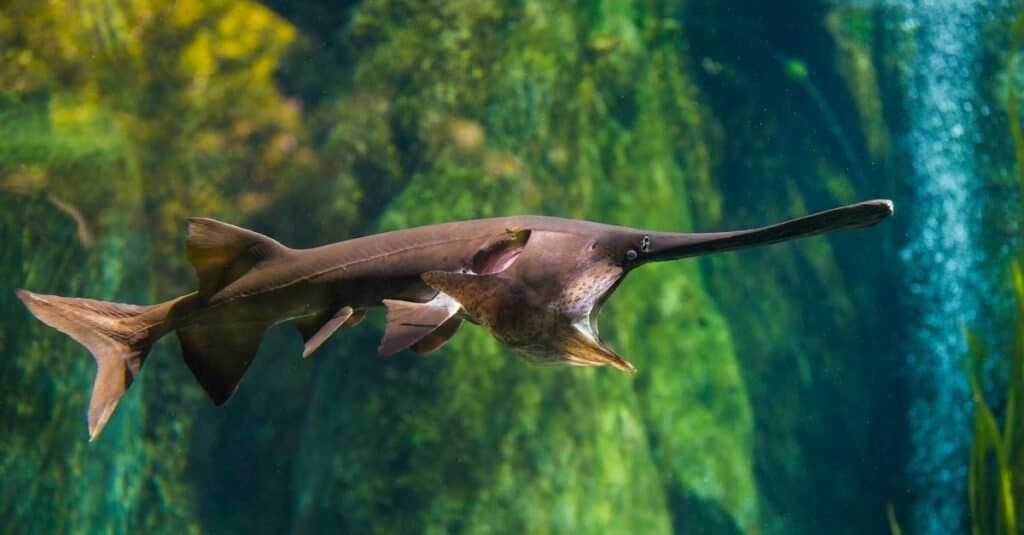
The American
Paddlefish
is smooth-skinned and almost entirely comprised of cartilage.
©Saran Jantraurai/Shutterstock.com
Are There Sharks In Louisiana?
There have been some shark sightings in the lakes of Louisiana. These deep-sea predatory fish enter the state’s waters via the Gulf of Mexico. The bull shark is the only shark species that can survive in freshwater and seawater habitats. These sharks have been spotted along the Mississippi River, which touches the shores of Louisiana and are common in the state.
Other shark species found along the state’s shores include great white sharks, blacktip, spinners, and hammerhead sharks. According to ISAF, Louisiana has only recorded 5 shark attacks in almost 200 years. The probability of getting bitten by a shark in a Louisiana lake is only about 2.5% annually.
Are There Venomous Snakes In Louisiana Lakes?
Louisiana has a vast ecosystem due to its diverse landscapes, including deltas, swamps, marshes, moist savannahs, lakes, and longleaf coniferous forests. These different landscapes provide a wide range of habitat choices for land and aquatic snake species in Louisiana.
The northern cottonmouth is the only venomous one of the many snakes that swim in the state’s lakes. Thus, the odds of running into a venomous snake in any Louisiana lake are quite low. Some snakes found in the state’s lakes are the banded, northern, and diamondback water snakes.

You can find cottonmouths in wetland habitats.
©Linda Burek/Shutterstock.com
Here Is A Summary Of The Deepest Lakes In Louisiana
- Calcasieu Lake is 3.3 feet deep
- Lake Charles is 5 feet deep
- Lake Borgne is 9.8 feet deep
- Lake Maurepas is 10 feet deep
- Lake Pontchartrain is 14 feet deep
- Caddo Lake is 20 feet deep
- Lake Claiborne is 35 feet deep
- Toledo Bend Reservoir is 110 feet deep
- Lake Peigneur is 200 feet deep
The photo featured at the top of this post is © Felix Mizioznikov/Shutterstock.com
Thank you for reading! Have some feedback for us? Contact the AZ Animals editorial team.






